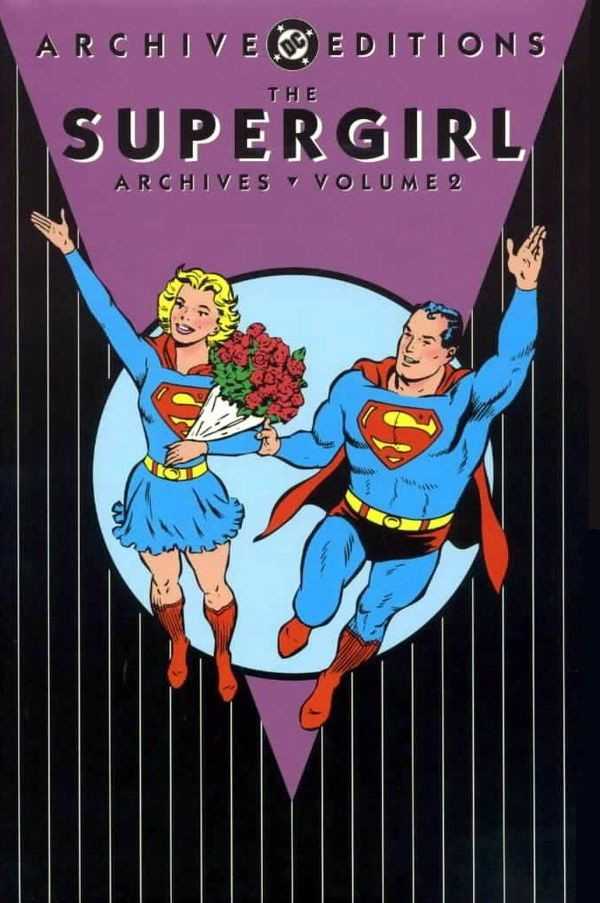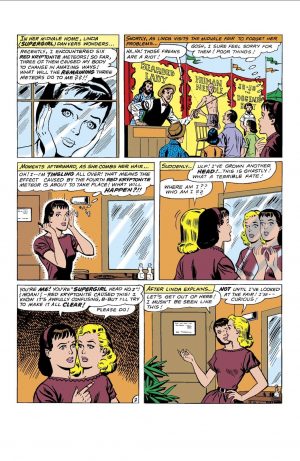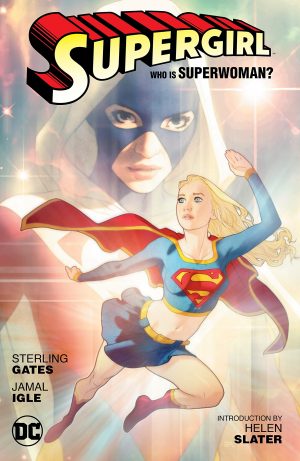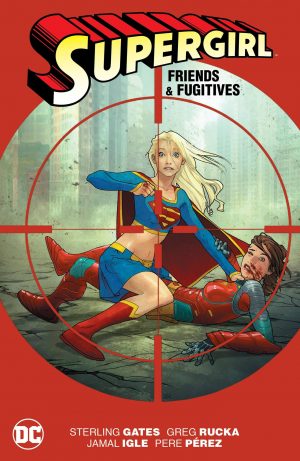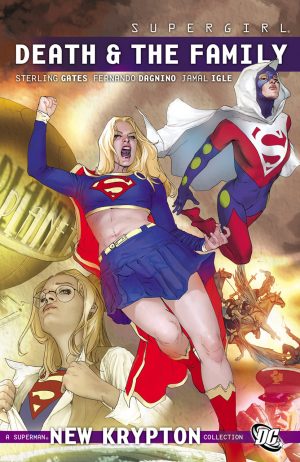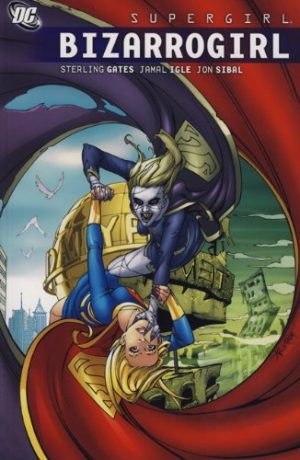Review by Win Wiacek
Supergirl is now a multimedia solo star of screen and page. Such was not always the case, as this engaging hardback compendium joyously attests, picking up Supergirl’s adventures from where Volume One ended in 1960, this time under a Curt Swan cover modified from the final story here in which a big change in the Maid of Might’s status occurs. When her adoptive parents learn of their new daughter’s true origins, Superman allows his cousin to announce her existence to the world in two-part saga ‘The World’s Greatest Heroine!’ and ‘The Infinite Monster!’. Jerry Siegel and regular artist Jim Mooney detail how Supergirl openly saves planet Earth and is finally credited for it.
Before that, though, there’s a fine selection in which Supergirl must perform super feats without anyone seeing, her life as much a secret in costume as out of it, being plain Linda Lee, orphan.
‘Supergirl’s Busiest Day!’ is packed with cameos, all celebrating a special occasion, after which Streaky the Super-Cat makes another bombastic appearance as the wonder girl builds ‘Supergirl’s Fortress of Solitude!’. Otto Binder writes ‘The Second Supergirl!’, an alternate world tale over two parts, continuing with ‘The Supergirl of Two Worlds!’ Siegel and Mooney then soundly demonstrate the DC dictum that history cannot be changed in ‘Supergirl’s Three Time Trips!’ before ‘Ma and Pa Kent Adopt Supergirl!’ offers a truly nightmarish scenario. That’s followed by a return visit to the Legion of Super Heroes in ‘Supergirl’s Three Super Girl-Friends!’, then an animal epic in ‘The Battle of the Super-Pets!’
The next five tales form an extended saga taking the Girl of Steel in totally new directions. On the eve of Superman announcing her existence to the world, Supergirl loses her powers and – resigned to a normal life – is adopted by the childless Fred and Edna Danvers. Tragically it’s a deadly plot as an evil genius plans to replace Supergirl and conquer Earth. This mini-epic solidly repositions the character for a more positive, effective and fully public role. The young heroine is still in very much in training, her existence kept secret from the general public and living with adoptive parents completely unaware that the orphan they have recently adopted is a Kryptonian super-being. These stories generally revolve around problem-solving, identity-saving and loneliness, with both good taste and the Comics Code ensuring readers weren’t traumatised by unsavoury or excessively violent tales.
Alternatively, plots akin to situation comedies often feature, as in ‘The Six Red “K” Perils of Supergirl!’ Peculiar transformations were a mainstay of 1960s comics. A post-modern interpretation might discern some metaphor for puberty or girls “becoming” women, the likely truth is just Seigel’s love of comedy and an editorial belief that fighting was simply unladylike. Red Kryptonite causes temporary physical and sometimes mental mutations in Kryptonians. It was a godsend to writers needing a challenging visual element when using characters with the power to drop-kick planets. Here the wonder stuff generates a circus of horrors, transforming Supergirl into a werewolf, shrinking her to microscopic size and making her fat!
‘The Strange Bodies of Supergirl!’is a daffy holdover to simpler times wherein Linda Lee Danvers’ travails escalate after she grows a second head, gains death-ray vision (ostensibly!) and morphs into a mermaid.
Throughout her formative years Kara of Krypton underwent more changes than most of her confreres had in twenty years, as editors sought to find a niche the buying public could resonate with, but for all that, these stories remain exciting, ingenious and utterly bemusing. They’re also found in black and white as Showcase Presents Supergirl, and in colour in Supergirl: The Silver Age.
